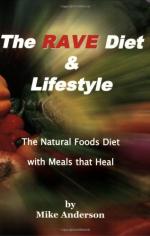|
This section contains 318 words (approx. 2 pages at 300 words per page) |
A rave is a large, typically overnight dance party with a focus on techno and related forms of music. The rave provides a venue for innovative musical forms and fashions as well as for the use and abuse of a variety of drugs known collectively as CLUB DRUGS. Raves and the "ravers" who attend them have been a part of youth culture since the late 1980s when all-night parties and Detroit techno music sprang up in the United Kingdom to form the phenomenon that is still a social concern today. Raves are held in a variety of locales, from traditional nightclubs to warehouses to open pastures (sometimes without the knowledge of the owners). A major part of the attraction of raves is the permissive, underground atmosphere. Ravers, who are more often than not in their late teens and early twenties, enjoy the freedom from supervision that is common at raves.
 Dancers take to the crowded, smoky dance floor at an all-night rave at Groove Jet in Miami Beach, September 24, 1999. (AP Photo/Greg Smith)
Dancers take to the crowded, smoky dance floor at an all-night rave at Groove Jet in Miami Beach, September 24, 1999. (AP Photo/Greg Smith)
Hedonism or "pleasure seeking" is also of central value in rave culture, and this correlates with a high incidence of drug use. Many ravers freely admit to the presence of various clubdrugs on the rave scene, particularly METHAMPHETAMINE (meth, crank, crystal, speed or whizz) and MDMA (E, X, ecstasy, or rolls) although others such as ROHYPNOL, GHB, LSD, and KETAMINE have recently gained more attention in the media as clubdrugs. In truth, polydrug abuse is common enough on the rave scene that no list of drugs can be regarded as comprehensive. Ravers tend to regard the drugs they use as newer and safer than "older" drugs like HEROIN and PCP. This is rarely true insofar as safety is concerned. Raves have certainly seen their share of drug casualties, and are cause for concern because of the high incidence of drug problems among ravers.
|
This section contains 318 words (approx. 2 pages at 300 words per page) |


